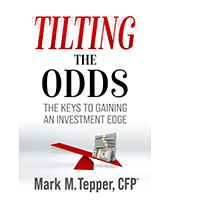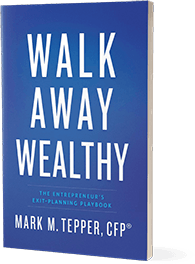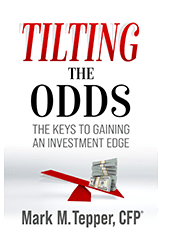The Long-Term Market is Easy . . .
The short term is a bit tougher, though.
In the short term, I’d say there are two primary, and opposing, factors to deal with, which make the coming days and months a bit rough to predict. First, for much of the rest of the year, we are certain to see a continued tightening in financial conditions. This is tough for financial assets lower down on the quality spectrum, particularly as they’ve spent quite a bit of time over the last several years getting bloated on increasingly accommodative conditions.
The second factor is the Ukraine-Russian situation. Eventually, this should settle, and that can create a relief rally, something we seem to see the market rush to get ahead of over and over again, of late.
What do you do with that? I’d point out that QE already stopped last week, while the first rate hike is scheduled for Wednesday. The timing of tightening is known and imminent, while the timing of a Ukraine resolution is unknown. Given that, in the next week or two, it probably makes more sense to be cautious, unless we see an actual, imminent settlement with Ukraine.
This is particularly true, given that it looks like the market has done it’s usual job of seeming to get in a fairly neutral position ahead of a major event. Unless the Fed shows up as dovish on Wednesday, it seems more likely that not that the market will go back to what it had been doing, preferring defensive quality over cyclicals and growth. Considering the dramatic inflation data of late, and the prospects for that to continue, the chances of a dovish Fed seem awfully small.
However, once we see a Ukraine resolution, we could see a decent relief rally in beaten down assets. The best analysis I can find seems to think the next several weeks are likely to be tough for Ukraine. If that’s true, chances are that in several weeks we may get an admittedly transitory chance to buy those stressed growth and cyclical assets for a multi-week rally.
Why am I confident we’re talking about a transitory bounce? According to Danielle DiMartino Booth, the three big factors that tend to drive the economy into recession are an inverted yield curve, a commodity price shock, or a fed tightening. At this point. we’re working towards getting all three. That potential trifecta seems to already be effecting growth, and I just don’t see how that materially changes. The second half of the year is likely to be unkind to lower quality assets. Lower quality assets benefit greatly from abundant liquidity and strong growth. The first seems impossible to expect, and the second seems extremely unlikely. The long term looks tough for high beta and low quality.
It may feel bad, but the drawdown we’ve seen thus far is about the median drawdown we see in the S&P 500 in any given year. Thus far, the decline we’ve seen is nothing special, but it seems likely to get worse as global central banks tighten and growth expectations continue to come down.
 Enter your information below, and we will email you our new eBook, Tilting the Odds
Enter your information below, and we will email you our new eBook, Tilting the Odds




